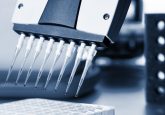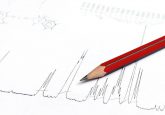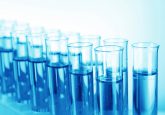New NIST technique allows for high-speed chemical imaging of tissues

A new, improved, technique from a team of researchers from the National Institute of Standards and Technology (NIST; MD, USA), working alongside the Cleveland Clinic (OH, USA), analyzes biological cells and tissues based on characteristic molecular vibration ‘signatures’.
An advanced form of the commonly used spontaneous Raman spectroscopy, the technique delivers signals that are 10,000-times stronger than those obtained from spontaneous Raman scattering, and 100-times stronger than those obtained from comparable ‘coherent Raman’ instruments. The new technique also utilizes a much larger portion of the vibrational spectrum of interest to cell biologists.
Raman spectroscopy utilizes the subtle interplay between light and molecules. Molecules have characteristic vibration frequencies associated with their atoms flexing and stretching the molecular bonds that hold them together. Under the right conditions, a photon interacting with the molecule will absorb some of this energy from a particular vibration and emerge with its frequency shifted by that frequency – ‘anti-Stokes scattering’.
Benefits of recording the energy-enhanced photons include being able to identify and distinguish between many complex biomolecules without destroying them or altering the specimen (such as with stains, or fluorescent or radioactive tags).
The new technique is a version of ‘broadband, coherent anti-Stokes Raman scattering’, and is fast and accurate enough to allow the creation of high-resolution images of biological specimens, which, according to the NIST team, contain detailed spatial information on the specific biomolecules present at speeds fast enough to observe changes and movement in living cells.
‘Coherent’ Raman methods use specially tuned lasers to both excite the molecular vibrations and provide a bright source of probe photons to read the vibrations; this has partially solved an earlier problem of signal levels being very faint, but the coherent Raman methods developed to date have had limited ability to access most of the available spectroscopic information.
The NIST instrument is able to obtain enhanced signal largely by using excitation light efficiently. It utilizes ultrashort laser pulses to simultaneously excite all vibrational modes of interest. “Too much light will destroy cells,” explained NIST chemist Marcus Cicerone, “so we’ve engineered a very efficient way of generating our signal with limited amounts of light. We’ve been more efficient, but also more efficient where it counts, in the fingerprint region.”
“There are a number of firsts in this paper for Raman spectroscopy,” explained NIST electrical engineer Charles Camp, Jr. “Among other things we show detailed images of collagen and elastin – not normally identified with coherent Raman techniques – and multiple peaks attributed to different bonds and states of nucleotides that show the presence of DNA or RNA.”
Source: Enhanced NIST instrument enables high-speed chemical imaging of tissues.





